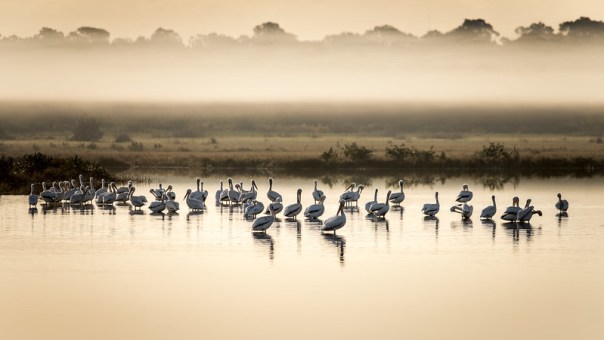On July 4th, 1936, in the Virginia Blue Ridge mountains along Skyline Drive at Big Meadows, President Roosevelt dedicated Shenandoah National Park. Since that time, people have greatly enjoyed wonderful vistas, beautiful waterfalls, quiet wooded hollows, hiking, wildlife and the night sky.
 Sunrise at Spitler Knoll
Sunrise at Spitler Knoll
I’ve been to Shenandoah many times. It’s the first national park I ever visited – too long ago to admit. I hiked there with our Boy Scout troop from Bowie, Maryland when I was a very young man . Hiking’s a major activity at the park – the Appalachian Trail runs along and crosses Skyline Drive in many places.
 Appalachian trail view
Appalachian trail view
Lynn and I also took Mike and Mary there when they were younger and we have fond (and scary!) memories of hikes with those two scrambling over rocks and along ridges to be first to see a view. On one of our visits, we also picnicked with our good friends the Sullivans, and hiked with the kids down to Dark Hollow Falls.
 Dark Hollow Falls – A gorgeous waterfall, although crowded at times since it’s one of the closest ones to Skyline Drive. (Photo from 1996).
Dark Hollow Falls – A gorgeous waterfall, although crowded at times since it’s one of the closest ones to Skyline Drive. (Photo from 1996).
To get the most out of your visit, you need an up to date guide-book. We had one from our previous visits (printed in 1988!), but unfortunately we didn’t realize how out of date it was. Fires and other events have changed places in the park, sometimes quite dramatically. Fortunately, we found updated books at the park. One example of the changes:
 Dead eastern hemlock trees – Hemlock Springs, Shenandoah National Park. We really enjoyed hiking through large stands of hemlock trees the last time we were there, 20+ years ago. Now, 95% of the Hemlock trees in Shenandoah have been killed by the hemlock woolly adeligid, an invasive species introduced by humans.
Dead eastern hemlock trees – Hemlock Springs, Shenandoah National Park. We really enjoyed hiking through large stands of hemlock trees the last time we were there, 20+ years ago. Now, 95% of the Hemlock trees in Shenandoah have been killed by the hemlock woolly adeligid, an invasive species introduced by humans.
Weather can vary in the park. All of our visit was beautiful, but we spent one day completely socked in with heavy rain and visibility of 50 to 100 feet. I had fun walking around in the fog looking for photos, while Lynn wove a White Oak basket from scratch.
 Rain drops in the mist
Rain drops in the mist
We saw lots of wildlife while we were there. The deer are all over and not very skittish, since animals are protected in the park. We also saw 2 black bears – exciting! I didn’t look too hard for birds, but managed to spot at least one life bird (Dark-eyed Junco).
If you search the web you’ll see things to do in the surrounding area too. We’ve been to Luray Caverns in the past, although we didn’t have time to explore outside the park this time.
In summary, Shenandoah National Park deserves to be on your bucket list. If you haven’t been there yet, just go. If you have been there, you know what I mean.
You can see larger versions of the photos above by clicking on them and some other photos from our trip in this album on Flickr.
Thanks for stopping by and reading my blog. Now – go make some photos!
©2015, Ed Rosack. All rights reserved.
 Smoke on the water – Morning mist on Lake Searcy at Orlando Wetlands Park
Smoke on the water – Morning mist on Lake Searcy at Orlando Wetlands Park


























